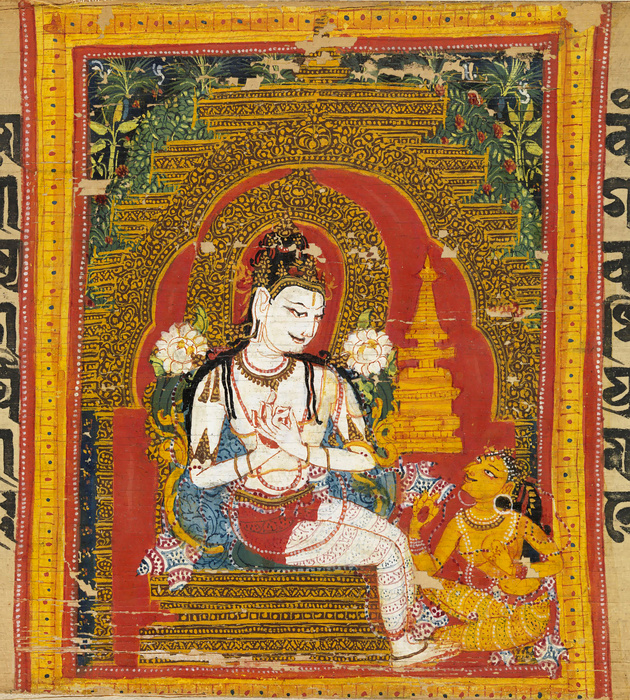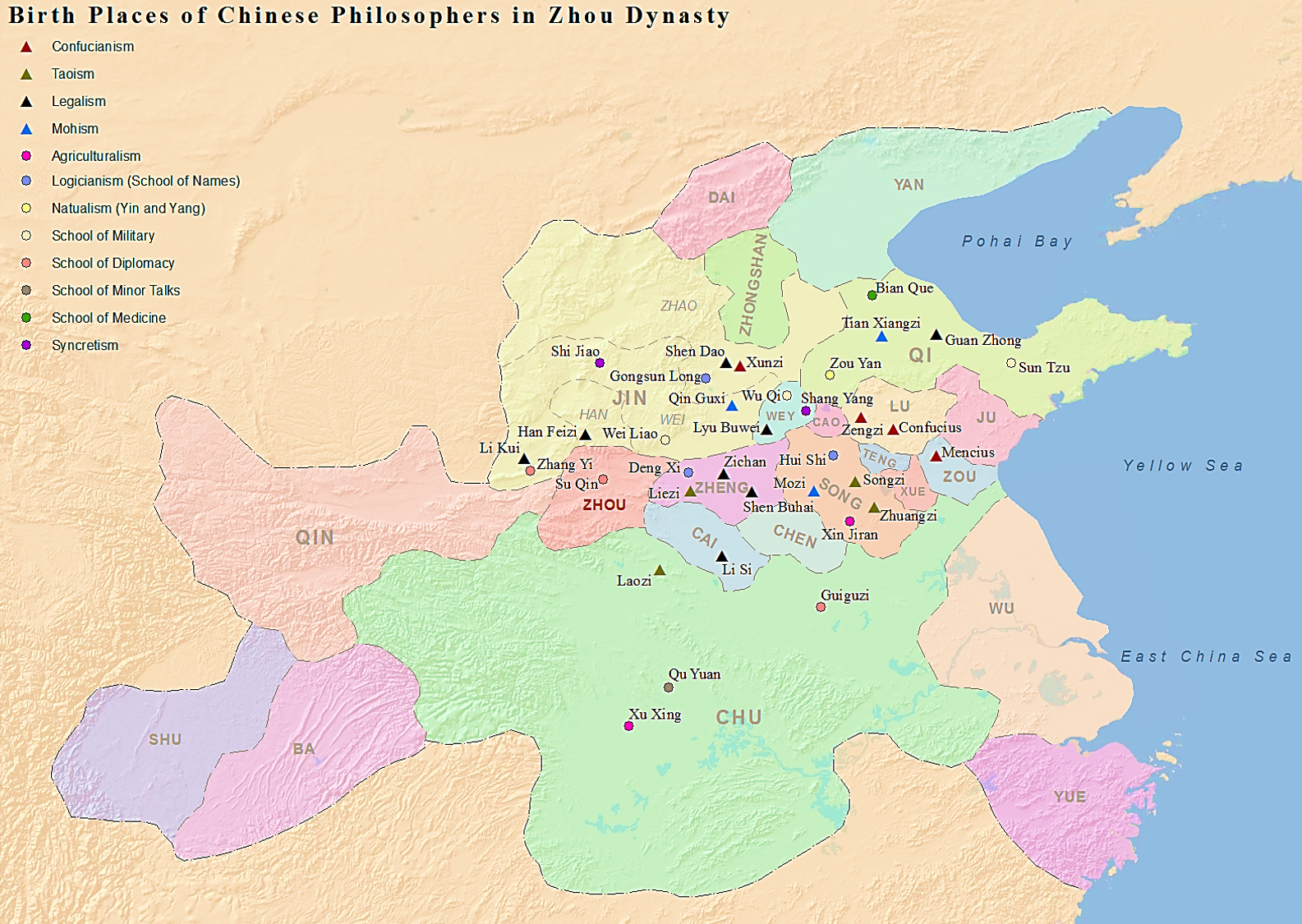|
Tathātā
Tathātā (; ; ) is a Buddhist term variously translated as "thusness" or "suchness", referring to the nature of reality free from conceptual elaborations and the subject–object distinction. Although it is a significant concept in Mahayana Buddhism, it is also used in the Theravada tradition. The Buddha The Buddha referred to himself as the Tathāgata, which can mean either "One who has thus come" or "One who has thus gone", and can also be interpreted as "One who has arrived at suchness". Theravada Buddhism In Theravada, this term designates the nature of existence (''bhāva''), the truth which applies to things. According to the '' Kathavatthu'', ''tathātā'' is not an unconditioned or un-constructed (''asankhata'') phenomenon. The only phenomenon which is un- constructed in Theravada is Nibbana. According to Buddhadasa Bhikkhu, ''tathātā'' is merely the way things are, the truth of all things: "When tathātā is seen, the three characteristics of anicca mpermanence ... [...More Info...] [...Related Items...] OR: [Wikipedia] [Google] [Baidu] |
Dharmadhatu
Dharmadhatu (; ; ) is the 'dimension', 'realm' or 'sphere' (dhātu) of the Dharma or Absolute Reality. Entire Dharmadhatu was filled with an infinite number of buddha-lands (Sanskrit: buddhakṣetra) with ineffable number of Buddhas. This realm is beyond of everything, and it is visible only to Buddhas and all other Bodhisattvas in existence. Definition In Mahayana Buddhism, dharmadhatu means "realm of all phenomena", "realm of all things" (the entire universe with all visible and invisible things) or "realm of eternal truth". It is referred to by several analogous terms from Mahayana Buddhist philosophy, such as ''tathātā'' (reality "as-it-is"), ''śūnyatā'' (emptiness), '' pratitya-samutpada'' (dependent co-arising) and eternal Buddha. It is the "deepest nature, or essence". Dharmadhatu is the purified mind in its natural state, free of obscurations. It is the essence-quality or primal nature of mind, the fundamental ground of consciousness of the trikaya, which is acc ... [...More Info...] [...Related Items...] OR: [Wikipedia] [Google] [Baidu] |
Mahayana
Mahāyāna ( ; , , ; ) is a term for a broad group of Buddhist traditions, Buddhist texts#Mahāyāna texts, texts, Buddhist philosophy, philosophies, and practices developed in ancient India ( onwards). It is considered one of the three main existing branches of Buddhism, the others being Theravāda and Vajrayāna.Harvey (2013), p. 189. Mahāyāna accepts the main scriptures and teachings of Early Buddhist schools, early Buddhism but also recognizes various doctrines and texts that are not accepted by Theravada Buddhism as original. These include the Mahāyāna sūtras and their emphasis on the ''bodhisattva'' path and Prajnaparamita, ''Prajñāpāramitā''. Vajrayāna or Mantra traditions are a subset of Mahāyāna which makes use of numerous Tantra, tantric methods Vajrayānists consider to help achieve Buddhahood. Mahāyāna also refers to the path of the bodhisattva striving to become a fully awakened Buddha for the benefit of all sentience, sentient beings, and is thus also ... [...More Info...] [...Related Items...] OR: [Wikipedia] [Google] [Baidu] |
Dharma Body
Dharma (; , ) is a key concept in various Indian religions. The term ''dharma'' does not have a single, clear translation and conveys a multifaceted idea. Etymologically, it comes from the Sanskrit ''dhr-'', meaning ''to hold'' or ''to support'', thus referring to law that sustains things—from one's life to society, and to the Universe at large. In its most commonly used sense, dharma refers to an individual's moral responsibilities or duties; the dharma of a farmer differs from the dharma of a soldier, thus making the concept of dharma a varying dynamic. As with the other components of the Puruṣārtha, the concept of ''dharma'' is pan-Indian. The antonym of dharma is ''adharma''. In Hinduism, ''dharma'' denotes behaviour that is considered to be in accord with ''Ṛta''—the "order and custom" that makes life and universe possible. This includes duties, rights, laws, conduct, virtues and "right way of living" according to the stage of life or social position. ''Dharma'' is ... [...More Info...] [...Related Items...] OR: [Wikipedia] [Google] [Baidu] |
Haecceity
Haecceity (; from the Latin , 'thisness') is a term from medieval scholastic philosophy, first coined by followers of Duns Scotus to denote a concept that he seems to have originated: the irreducible determination of a thing that makes it ''this particular'' thing. Haecceity is a person's or object's thisness, the individualising difference between the concept "a person" and the concept "Socrates" (''i.e.'', a ''specific'' person). In modern philosophy of physics, it is sometimes referred to as primitive thisness. Etymology Haecceity is a Latin neologism formed as an abstract noun derived from the demonstrative pronoun , meaning 'this (very)' (feminine singular) or 'these (very)' (feminine or neuter plural). It is apparently formed on the model of another (much older) neologism ('whatness'), which is a calque of Aristotle's Greek () or 'the what (it) is'. Haecceity vs. quiddity Haecceity may be defined in some dictionaries as simply the "essence" of a thing, or as a simple syn ... [...More Info...] [...Related Items...] OR: [Wikipedia] [Google] [Baidu] |
Hinduism
Hinduism () is an Hypernymy and hyponymy, umbrella term for a range of Indian religions, Indian List of religions and spiritual traditions#Indian religions, religious and spiritual traditions (Sampradaya, ''sampradaya''s) that are unified by adherence to the concept of ''dharma'', a Ṛta, cosmic order maintained by its followers through rituals and righteous living, as expounded in the Vedas. The word ''Hindu'' is an exonym, and while Hinduism has been called the oldest religion in the world, it has also been described by the modern term ''Sanātana Dharma'' () emphasizing its eternal nature. ''Vaidika Dharma'' () and ''Arya dharma'' are historical endonyms for Hinduism. Hinduism entails diverse systems of thought, marked by a range of shared Glossary of Hinduism terms, concepts that discuss God in Hinduism, theology, Hindu mythology, mythology, among other topics in Hindu texts, textual sources. Hindu texts have been classified into Śruti () and Smṛti (). The major Hin ... [...More Info...] [...Related Items...] OR: [Wikipedia] [Google] [Baidu] |
Tattva
According to various Indian schools of philosophy, ''tattvas'' () are the elements or aspects of reality that constitute human experience. In some traditions, they are conceived as an aspect of the Indian deities. Although the number of ''tattvas'' varies depending on the philosophical school, together they are thought to form the basis of all our experience. The Samkhya philosophy uses a system of 25 ''tattvas'', while Shaivism uses a system of 36 ''tattvas''. In Buddhism, the equivalent is the list of ''Abhidharma'' which constitute reality, as in Namarupa. Etymology ''Tattva'' () is a Sanskrit word meaning ''truth''. Hinduism Samkhya The Samkhya philosophy regards the Universe as consisting of two eternal realities: '' Purusha'' and '' Prakrti''. It is therefore a strongly dualist philosophy. The ''Purusha'' is the centre of consciousness, whereas the ''Prakrti'' is the source of all material existence. The twenty-five ''tattva'' system of Samkhya concerns itself only ... [...More Info...] [...Related Items...] OR: [Wikipedia] [Google] [Baidu] |
Daoism
Taoism or Daoism (, ) is a diverse philosophical and religious tradition indigenous to China, emphasizing harmony with the Tao ( zh, p=dào, w=tao4). With a range of meaning in Chinese philosophy, translations of Tao include 'way', 'road', 'path', or 'technique', generally understood in the Taoist sense as an enigmatic process of transformation ultimately underlying reality. Taoist thought has informed the development of various practices within the Taoist tradition and beyond, including forms of meditation, astrology, qigong, feng shui, and internal alchemy. A common goal of Taoist practice is self-cultivation, a deeper appreciation of the Tao, and more harmonious existence. Taoist ethics vary, but generally emphasize such virtues as '' effortless action'', ''naturalness'', ''simplicity'', and the three treasures of compassion, frugality, and humility. The core of Taoist thought crystallized during the early Warring States period (), during which the epigrammatic ... [...More Info...] [...Related Items...] OR: [Wikipedia] [Google] [Baidu] |
Ziran
''Ziran'' ( zh, t=自然) is a key concept in Daoism that literally means "of its own; by itself" and thus "naturally; natural; spontaneously; freely; in the course of events; of course; doubtlessly". This Chinese word is a two-character compound of and , which is used as a ''-ran'' suffix marking adjectives or adverbs (roughly corresponding to English ''-ly''). In Chinese culture, the nose (or ''zi'') is a common metaphor for a person's point of view. Origin The phrase ''ziran'''s use in Daoism is rooted in the ''Tao Te Ching'' (chapters 17, 23, 25, 51, 64), written around 400 BCE. ''Ziran'' is a central concept of Daoism, closely tied to the practice of wuwei, detached or effortless action. ''Ziran'' refers to a state of "as-it-isness," the most important quality for anyone following Daoist beliefs. To become nearer to a state of ''ziran'', one must become separate from unnatural influences and return to an entirely natural, spontaneous state. ''Ziran'' is related to devel ... [...More Info...] [...Related Items...] OR: [Wikipedia] [Google] [Baidu] |
Reality In Buddhism
Reality is the sum or aggregate of everything in existence; everything that is not imaginary. Different cultures and academic disciplines conceptualize it in various ways. Philosophical questions about the nature of reality, existence, or being are considered under the rubric of ontology, a major branch of metaphysics in the Western intellectual tradition. Ontological questions also feature in diverse branches of philosophy, including the philosophy of science, religion, mathematics, and logic. These include questions about whether only physical objects are real (e.g., physicalism), whether reality is fundamentally immaterial (e.g., idealism), whether hypothetical unobservable entities posited by scientific theories exist (e.g., scientific realism), whether God exists, whether numbers and other abstract objects exist, and whether possible worlds exist. Etymology and meaning The word ''reality'' is a borrowing from the Middle French ''realité'' and the post-Classical ... [...More Info...] [...Related Items...] OR: [Wikipedia] [Google] [Baidu] |
Ten Suchnesses
The Ten suchnesses (; ) are a Mahayana doctrine which is important, as well as unique, to that of the Tiantai (Tendai) and Nichiren Buddhism, Nichiren Buddhist schools of thought. The doctrine is derived from a passage found within the second chapter of Kumarajiva's Chinese translation of the Lotus Sutra, that "characterizes the ultimate reality (literally, “real mark”) of all dharmas in terms of ten suchnesses." This concept is also known as the ten reality aspects, ten factors of life, or the Reality of all Existence. Origin The list of ten suchnesses is neither found in Dharmaraksha's Chinese translation nor in the Tibetan edition or any of the extant Sanskrit manuscripts. The Sanskrit editions of the Lotus Sutra list only five elements: Kumarajiva translates the passage in Chapter Two as: The discrepancy between Kumarajivas translation and the Sanskrit editions might be due to Kumarajiva's use of a manuscript variant but Groner and Stone suggest that "the exp ... [...More Info...] [...Related Items...] OR: [Wikipedia] [Google] [Baidu] |
Nirvana
Nirvana, in the Indian religions (Jainism, Hinduism, Buddhism, and Sikhism), is the concept of an individual's passions being extinguished as the ultimate state of salvation, release, or liberation from suffering ('' duḥkha'') and from the cycle of birth and rebirth ('' saṃsāra''). In Indian religions, nirvana is synonymous with ''moksha'' and ''mukti''. All Indian religions assert it to be a state of perfect quietude, freedom, and highest happiness; liberation from attachment and worldly suffering; and the ending of ''samsara'', the cycle of existence.Gavin Flood, ''Nirvana''. In: John Bowker (ed.), '' Oxford Dictionary of World Religions'' However, non-Buddhist and Buddhist traditions describe these terms for liberation differently. In Hindu philosophy, it is the union of or the realization of the identity of Atman with Brahman, depending on the Hindu tradition. In Jainism, nirvana is also the soteriological goal, representing the release of a soul from karmic bondage ... [...More Info...] [...Related Items...] OR: [Wikipedia] [Google] [Baidu] |
Madhyamaka
Madhyamaka ("middle way" or "centrism"; ; ; Tibetic languages, Tibetan: དབུ་མ་པ་ ; ''dbu ma pa''), otherwise known as Śūnyavāda ("the Śūnyatā, emptiness doctrine") and Niḥsvabhāvavāda ("the no Svabhava, ''svabhāva'' doctrine"), refers to a tradition of Buddhist philosophy and practice founded by the History of Buddhism in India, Indian Buddhist monk and philosopher Nagarjuna, Nāgārjuna ().Wynne, Alexander (2015) ''Early Buddhist Teaching as Proto-śūnyavāda.'' Journal of the Oxford Centre for Buddhist Studies, 6. pp. 213-241. The foundational text of the Mādhyamaka tradition is Nagarjuna, Nāgārjuna's ''Mūlamadhyamakakārikā'' ("Root Verses on the Middle Way"). More broadly, Madhyamaka also refers to the ultimate nature of phenomena as well as the non-conceptual realization of ultimate reality that is experienced in Buddhist meditation, meditation. Since the 4th century CE onwards, Madhyamaka philosophy had a major influence on the subsequent d ... [...More Info...] [...Related Items...] OR: [Wikipedia] [Google] [Baidu] |






